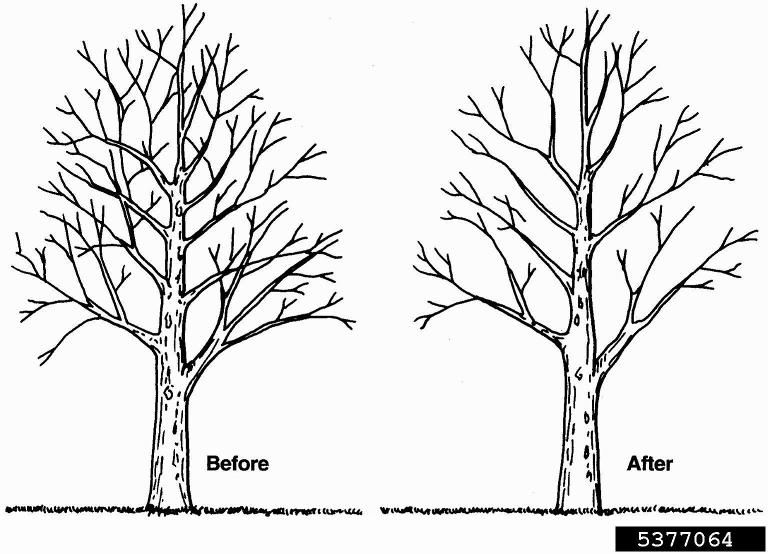Identifying Hazardous Trees
Conduct a Winter Walkthrough to Diagnose Tree Problems with this Checklist!
Winter is a good time to assess the health of your trees. Without leaves the structure and form of the tree is easier to see. This is a tree grading tool intended to assist property management professionals.
This checklist has three categories:
- Identification
- Determining Removal Needs
- Determining Pruning Needs

First thing’s first:
What kind of tree is it?
☐ Deciduous
☐ Evergreen
Can you identify the species?
Knowing the species is crucial to determining how the tree should be pruned. Different species have different growth habits. Call us for identification help.
Determine if it needs removal.
Inspect the trunk:
Is the tree leaning?
☐ Yes
☐ No
A leaning tree suggests that the root system has been compromised and the tree may fall.
Does it have cracks or holes?
☐ Yes
☐ No
Does it bleed or have a wet spot?
☐ Yes
☐ No
Are fungal conches growing out of the tree?
☐ Yes
☐ No
These symptoms are indicative of heart rot or insect damage. Heart rot is when the center of the tree is compromised by fungal activity. This fungus is often introduces by a beetle larvae while tunneling under the bark. Trees with symptoms maybe weak and will continue to decline. Often dead branches accompany these symptoms.
Add up the ‘yes’ checks
Score: _______ out of 4
1 – 2 out of 4: This tree may be on a declining path. Make notes to keep an eye on this tree.
3 out of 4: Seriously consider removing this tree. You may have a few years to remove the tree. Consult your arborist.
4 out of 4: Call us to get price remove your tree.
If the tree is dead, do not wait. Get it removed before it falls!
Determine your tree needs pruning.
Look at the branches:
Does it obstruct manmade objects? (I.e. touch / shade buildings, light fixtures, cars etc.)
☐ Yes
☐ No
Are there dead branches?
☐ Yes
☐ No
A yes to either of the above two questions means that this tree needs pruned. Both of these issues can cause serious safety / liability problems.
Do any branches cross or touch?
☐ Yes
☐ No
Does the tree look crowded?
☐ Yes
☐ No
Are small branches crossing into the interior?
☐ Yes
☐ No
A yes to all of the above questions suggests that the tree is due for a crown thinning. See Photo Below: The tree on the right is in need of a crown thinning. The tree on the left is an example of a properly pruned tree.

☐ Yes
☐ No
This type of new growth effects the overall form of the tree and can cause structural problems if left unchecked. Suckers are the new growth developing from the base of the tree. While water sprouts are similar but grow off of the branches. See photo below.

As a rule of thumb, trees need a little work every 3 to 4 years depending on the species and maturity. Older trees need work less often than younger trees.

Do you have hazardous trees?
Garrick-Santo Landscape Co.
(781) 322-0006
110 Eames Street Wilmington, MA 01887
160 Eastern Ave, Malden, MA, 02148
Proudly serving North Suburban Boston, North Shore, Merrimack Valley, Metro West since 1981
